<< Previous | Displaying results 6201-6248 of 6768 for "" | Next >>
The Subsequent Nuremberg Trials were proceedings against leading German industrialists, military figures, SS perpetrators, and others. American military tribunals in Nuremberg, Germany, presided over the 12 trials, held between December 1946 and Apri...
The Jewish children of Lodz suffered unfolding harsh realities after the German invasion of Poland. Some of them, including Dawid Sierakowiak, recorded their experiences in diaries.
Learn more about what life was like for Holocaust survivors living in DP camps after WWII. This series focuses on DP camps in the US zone of Allied-occupied Germany.
Browse a series of articles about the role of the German military and some of its leaders during the Holocaust and World War II.
Series of resources about Anne Frank and about the experiences of children during the Holocaust.
Browse a series of articles about the 1933 book burnings in Nazi Germany, including information about the works burned and the symbolism of the book burnings.
Series of articles on the Weimar Republic (1918–1933), a liberal democratic republic founded in Germany in the aftermath of World War I.
The Nazi regime harrassed and targeted gay men and lesbians. For gay men, this harassment turned into brutal persecution. Browse these articles to learn more.
How did the United States respond to the rise of the Nazis in 1930s Germany? What did the US government know about the Nazi persecution of Jews and the “Final Solution”? Learn more
Learn about the experiences of Black people during the Holocaust and WWII, including persecution in Nazi Germany, the impact of Nazi ideology, the impact of racism on African American athletes, and the experiences of Black American soldiers.
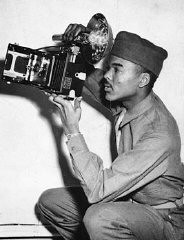
Germans in front of a Jewish-owned department store in Berlin during the anti-Jewish boycott. Berlin, Germany, April 1, 1933.
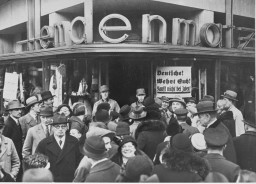
Period postcard of Evian-les-Bains, the site of the 1938 International Conference on Refugees.
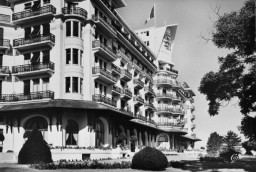
Adolf Hitler addresses an SA rally. Dortmund, Germany, 1933.
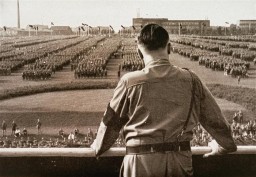
Portrait of Secretary of State Cordell Hull signing President Franklin D. Roosevelt's neutrality proclamation. September 5, 1939.
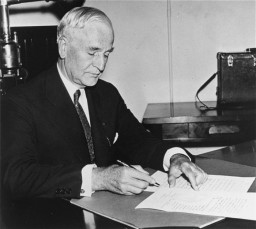
Portrait of Dr. Mohamed Helmy. Helmy was an Egyptian physician living in Berlin. He worked together with Frieda Szturmann, a local German woman, to help save a Jewish family.
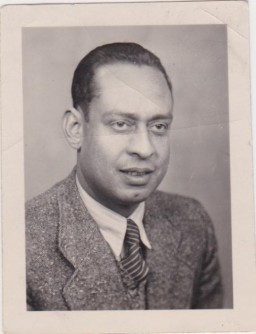
Dr. Mohamed Helmy and his wife, Emmi Ernst. During the Nazi era, they were forbidden from marrying because Dr. Helmy was not an Aryan. They were finally able to marry after the end of World War II.
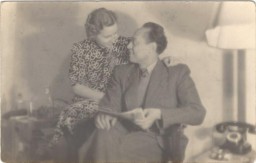
Anna Gutman (Boros) (left) and her daughter, Carla (second from left), visit with Dr. Mohamed Helmy (second from right) and his wife, Emmi (right), in Berlin in 1968. Dr. Helmy hid Gutman in his home for the duration of World War II.
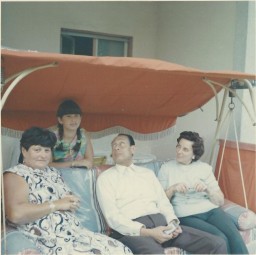
Anna Gutman (Boros) (seated, center), her daughter, and son-in-law visit Dr. Mohamed Helmy (seated, left) and his wife, Emmi (seated, right), in Berlin in 1980. Dr. Helmy hid Gutman in his home for the duration of World War II.
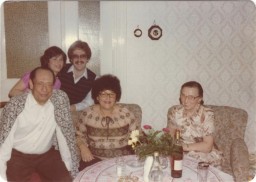
(1941-1942) Crowded newsstands in the United States such as these held journals representing various political parties and ideologies. Americans had access to many different perspectives about what was happening at home and abroad during the war.
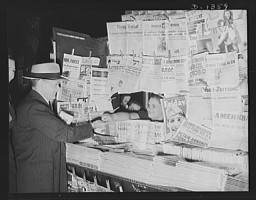
German tanks pass a burning Russian village during Operation Barbarossa, the invasion of the Soviet Union, in the summer of 1941. © IWM (HU 111382)
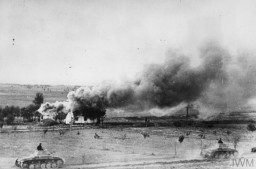
Reich President Paul von Hindenburg poses with Chancellor Adolf Hitler. Hindenburg appointed Hitler chancellor on January 30, 1933. Germany, 1933-1934.
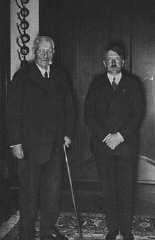
Hitler Youth leader Baldur von Schirach speaking at the opening of the Reich Academy for Youth Leadership. Braunschweig, Germany, June 4, 1938.
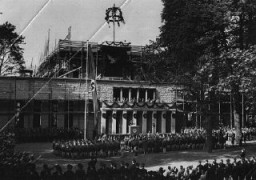
Followed closely by an SS bodyguard, Adolf Hitler greets supporters at the fourth Nazi Party Congress in Nuremberg. Germany, August 1929. US Holocaust Memorial Museum, courtesy of William O. McWorkman
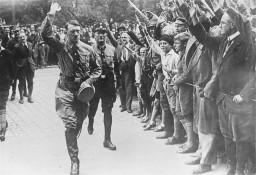
Adolf Hitler greets Reich Bishop Ludwig Mueller at a Nazi Party Congress. Roman Catholic Abbot Alban Schachleiter stands between Hitler and Mueller. Nuremberg, Germany, September 1934.
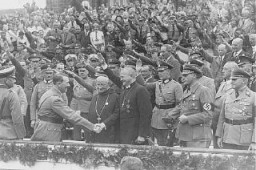
Cremation of corpses at Auschwitz-Birkenau. This photograph was taken clandestinely by prisoners in the Sonderkommando. Poland, summer 1944.
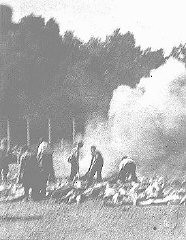
German police execute a group of Poles at the edge of the Uzbornia Grove just outside of Bochnia. Altogether, 51 residents of Bochnia and the vicinity were shot in reprisal for an assault on a German police station by members of the Polish underground organization "Orzel Bialy" (White Eagle) on 16 December 1939. Bochnia, Krakow, Poland, December 18, 1939.
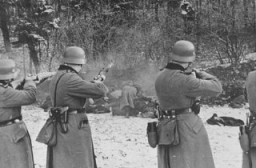
Policemen stand outside the shuttered Eldorado nightclub, long frequented by Berlin's gay and lesbian community. The Nazi government quickly closed the establishment down and pasted pro-Nazi election posters on the building. Berlin, Germany, March 5, 1933. Learn more about this photograph.
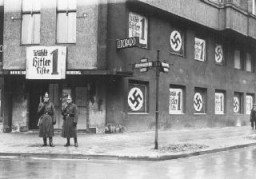
Visiting American newspaper and magazine correspondents view rows of corpses in Dachau. Photograph during an inspection following the liberation of the camp. Dachau, Germany, May 4, 1945.
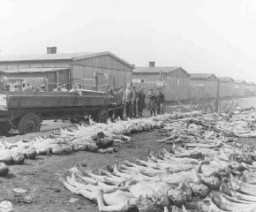
Prominent SS physician Josef Mengele, called the "angel of death" by his victims, conducted inhumane medical experiments on prisoners in the Auschwitz camp.
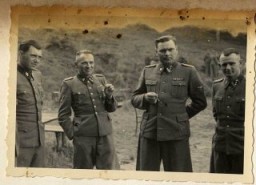
Jewish women and girls wearing the compulsory badge. Vienna, Austria, 1941.
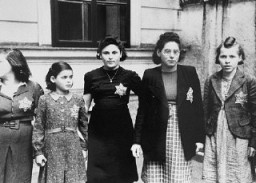
Mauthausen concentration camp inmates with American troops after the liberation of the camp.
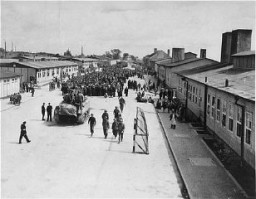
Page from the antisemitic German children's book, "Trau Keinem Fuchs..." (Trust No Fox in the Green Meadow and No Jew on his Oath). Germany, 1936.
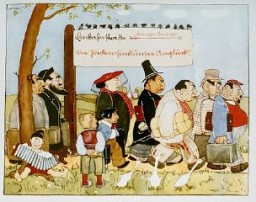
Page from the antisemitic German children's book Trau Keinem Fuchs... (Trust No Fox in the Green Meadow and No Jew on his Oath). The illustration uses antisemitic caricatures in an attempt to promote Nazi racial ideology. Germany, 1936.
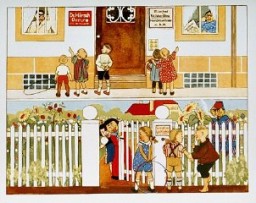
Page from the antisemitic German children's book, "Trau Keinem Fuchs..." (Trust No Fox in the Green Meadow and No Jew on his Oath). Germany, 1936.
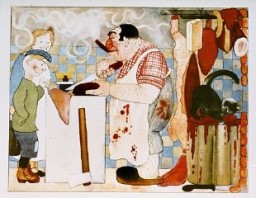
A view of barracks in the Stutthof concentration camp. This photograph was taken after the liberation of the camp. Stutthof, near Danzig, 1945.
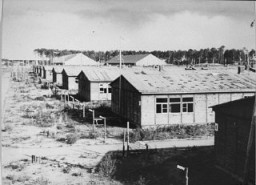
A building burns during the suppression of the Warsaw ghetto uprising. The photograph was taken through the window of a building adjacent to the ghetto. Warsaw, Poland, May 1943.

Passengers on the St. Louis wait to hear whether the Cuban government will permit them to land. Havana, Cuba, between May 27 and June 2, 1939.

Hitler Youth members listen to a speech by Adolf Hitler at a Nazi "party day" rally. Nuremberg, Germany, September 11, 1935.
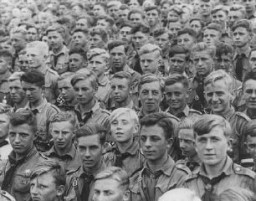
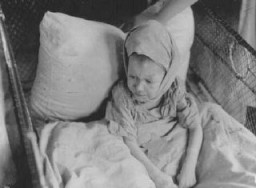
A crowd waits outside the American military court for the announcement of a verdict in the Malmedy war crimes trial of SS soldiers accused of taking part in the massacre of American prisoners of war. Dachau, Germany, July 16, 1946.
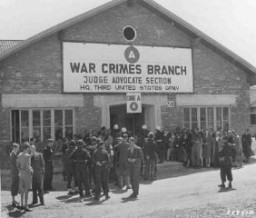
A German teacher singles out a child with "Aryan" features for special praise in class. The use of such examples taught schoolchildren to judge each other from a racial perspective. Germany, wartime.

Following the Axis invasion of Yugoslavia in April 1941, Hungarian authorities in Novi Sad began confiscating property from Jewish families. The city's synagogue served as a warehouse for the stolen goods.
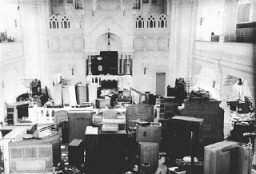
The 42nd Infantry Division participated in major WWII campaigns and is recognized for liberating the Dachau concentration camp in 1945.
The 8th Armored Division participated in major WWII campaigns and is recognized for liberating the Halberstadt-Zwieberge subcamp of Buchenwald in 1945.
An aerial view of Amsterdam. The photograph was taken for German military use. Amsterdam, the Netherlands, 1939-1940.
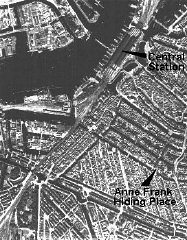
Arrival of Polish Jewish displaced persons in Vienna. They were sheltered at the Rothschild Hospital displaced persons camp. Vienna, Austria, 1946.
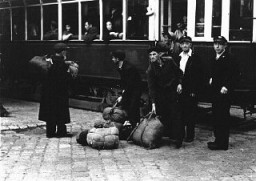
War crimes investigators interrogate chief nurse Irmgard Huber in connection with mass killings at the Hadamar Institute, one of main facilities in the Nazi Euthanasia Program. Hadamar, Germany, May 1945.
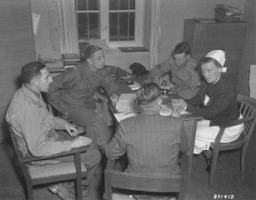
German police and SS personnel wait with a convoy of trucks during a shooting action in the Palmiry forest near Warsaw. These trucks were used to transport prisoners held in the Pawiak and Mokotow prisons. October–December 1939.
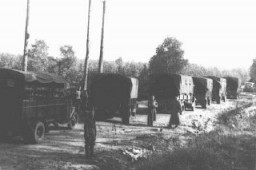
We would like to thank Crown Family Philanthropies, Abe and Ida Cooper Foundation, the Claims Conference, EVZ, and BMF for supporting the ongoing work to create content and resources for the Holocaust Encyclopedia. View the list of donor acknowledgement.